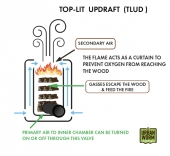For making biochar i like to use the cone method.
https://www.youtube.com/watch?v=h9J7J4fQHpo
Dig a hole then make tons of char.
You can then take the coals from the char pit then put in a metal 55 gal barrel put the lid on and walk away. ( provided it is air tight ).
Then if you want high quality char you put this into a retort, only it is already mostly burnt down so you can get far more in, and then process in less time if that is your goal.
I also have started piling up branches. I have stacked up Bolivian sunflower stems about 10 feet high. I have discovered they burn much like cardboard fast and hot in my rocket oven takes about 20 15 foot poles to get my oven up to 350 deg.
I used to cut them down with a machete, but now I have found that it is faster to dig out the roots a bit, then pull them out of the ground with the leverage a 15 foot pole gives, then I toss the whole thing on the pile.






